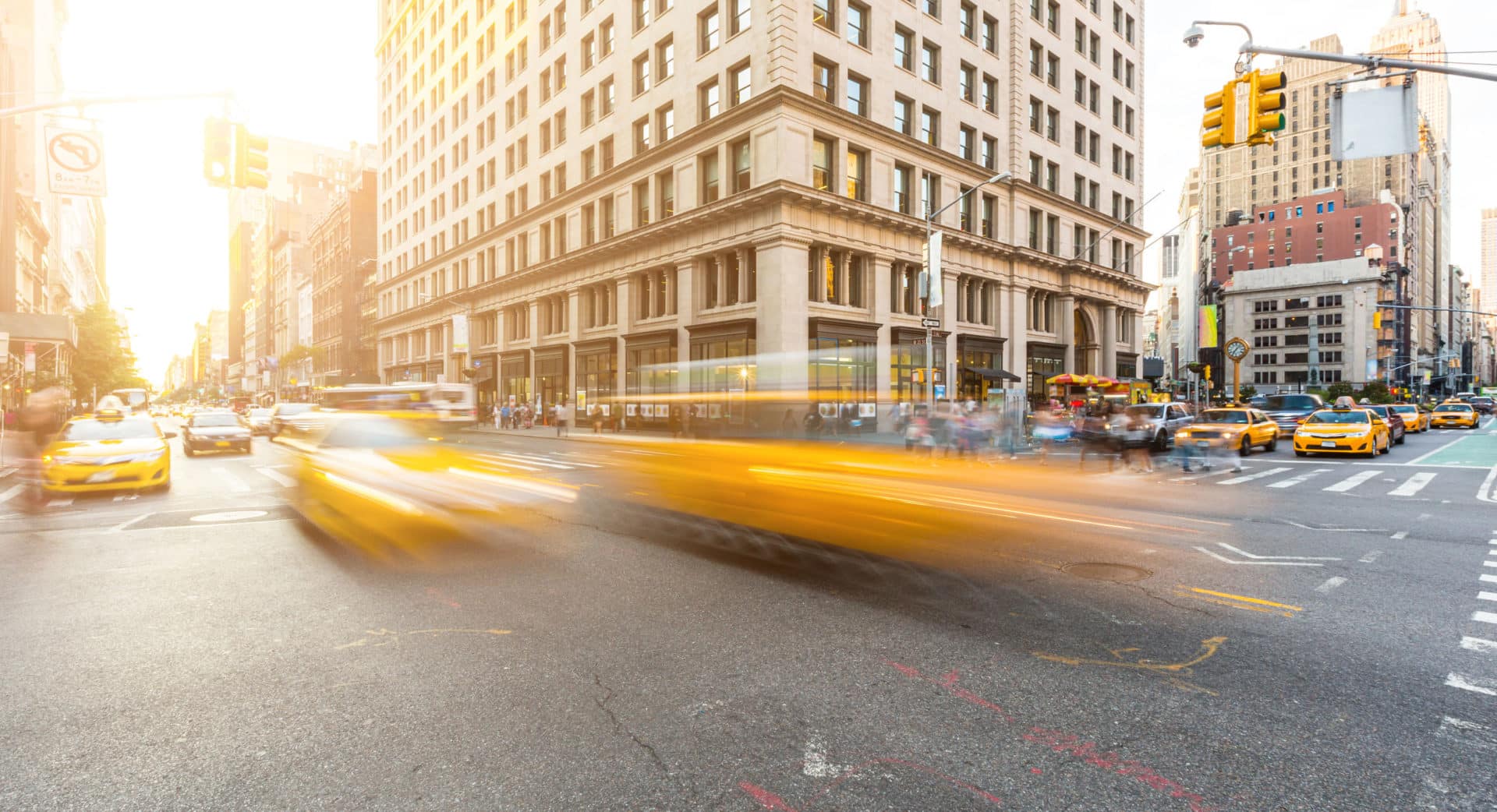Free Consultation
Free Consultation

Taxis are ubiquitous in New York. They’re one of the fastest and most convenient ways to get around the city. While they are convenient for New Yorkers, they’re also involved in more than their fair share of accidents causing debilitating or even fatal injuries — even for people who aren’t using them.
One taxi driver recently ran a red light in Harlem, then hit and killed a pedestrian in the crosswalk. A recent taxi careened into the Hell’s Kitchen restaurant, injuring eight. These and any other number of taxi accidents occur annually, and can often be prevented but for the negligence of the driver or cab company.
If you’re involved in a New York taxi accident, whether as a passenger or bystander, you have the option of seeking compensation to help you recover from your injuries. To get you started, we’ve put together a guide for taxi accident liability in New York.
If you’re involved in a taxi accident in New York, you’ll need to take immediate action in reporting the accident, especially if you’ve been injured.
If you or another party is injured, immediately notify the police by calling 9-1-1. While you’re waiting for help to arrive, take as many pictures as possible, and record the contact information of any witnesses at the scene.
If you’re involved in a non-injury accident that resulted in over $1,001 in total damage, all involved drivers must file a Report of Motor Vehicle Accident form with the DMV within 10 days of the accident. Failure to file this form can result in driver’s license suspension.
If you’re a taxi passenger or pedestrian in a taxi accident, you will not be liable for the accident. In this case, either the taxi driver or another motorist involved in the accident will be held liable.
If the taxi driver caused the accident, either the driver or the cab company could be held liable, depending on the specifics of the incident. If another driver caused the accident, they will be the party held liable for your injuries.
If you’re a motorist involved in a taxi collision, liability will depend on which drivers are determined to be at fault for the accident.
In New York, car insurance follows a “no-fault” scheme. Under no-fault, after an accident, your own car insurance pays for medical treatment, regardless of fault. If you are injured as a pedestrian or passenger you will file injury claims with all drivers involved in the accident, and let them sort out who pays.
No-fault insurance does not cover damage to vehicles. Under New York law, the responsible driver is held liable to repair any damage to the vehicles involved in the accident.
Under no-fault laws, only monetary damages such as medical bills and lost wages are awarded. If a serious injury is sustained, however, it’s possible to step outside of New York’s no-fault car insurance scheme and seek damages directly from the responsible party.
For an injury to qualify as serious, it must meet one of the following criteria:
In this case, it’s possible to seek compensation for non-monetary damages such as pain and suffering in a personal injury suit.
In accidents involving two or more motorists, fault will be determined in order to identify which driver(s) are liable for damages. New York employs a “pure comparative fault” rule when multiple parties are considered to share the blame for an accident.
In most cases, a jury will be asked to calculate two things: the dollar value of the plaintiff’s damages, and the percentage of fault that can be ascribed to each party. The plaintiff’s damages are then reduced by a percentage equal to the plaintiff’s share of fault.
If you’re injured in a New York taxi accident, you must file an injury claim within three years of the crash. Claims filed after the statute of limitations has expired will be dismissed.
That said, it’s best to act as soon as possible. Waiting several months or years to take action will hamper any necessary investigations of the incident, and also bring the seriousness of your injuries into question.
For any case in which you’ve suffered an injury by a taxi in New York, you have options to pursue compensation for your injuries. This will help you make a faster recovery, and lessen the accident’s impact on your family.